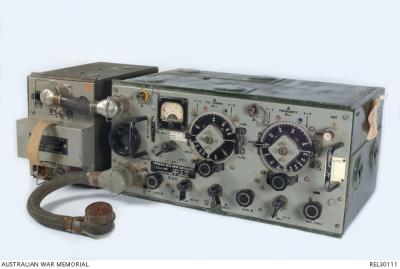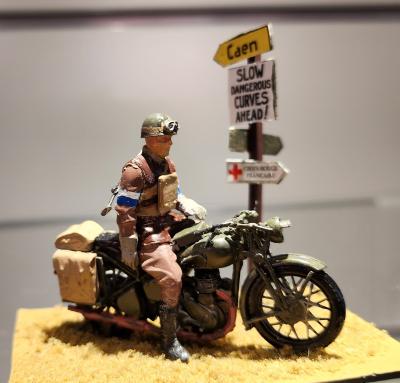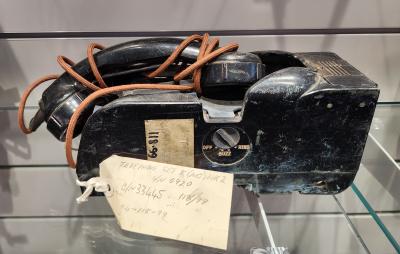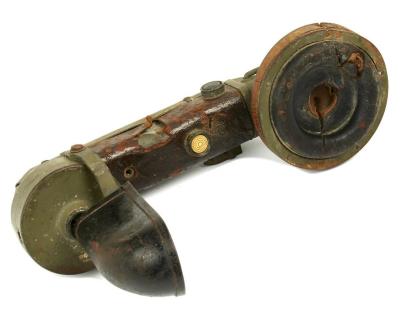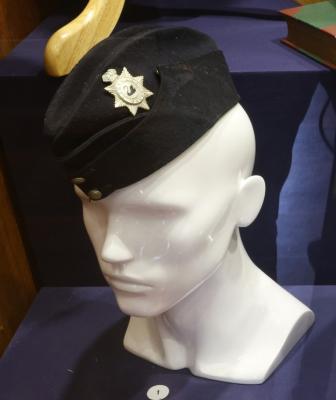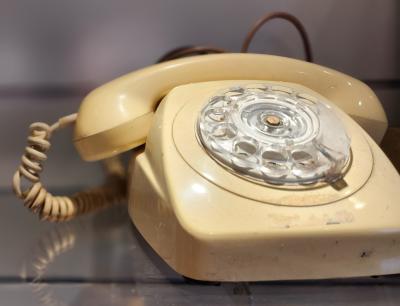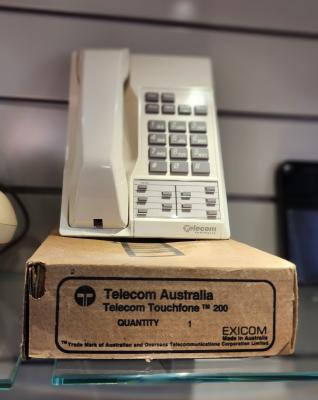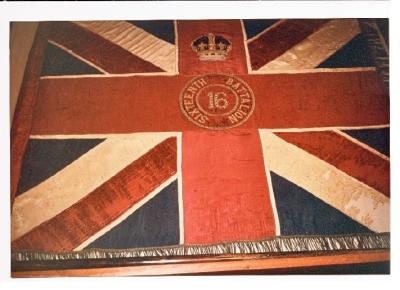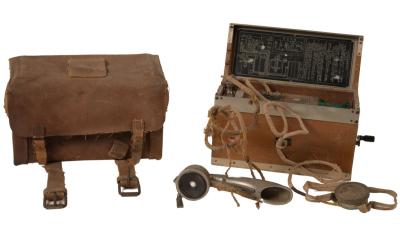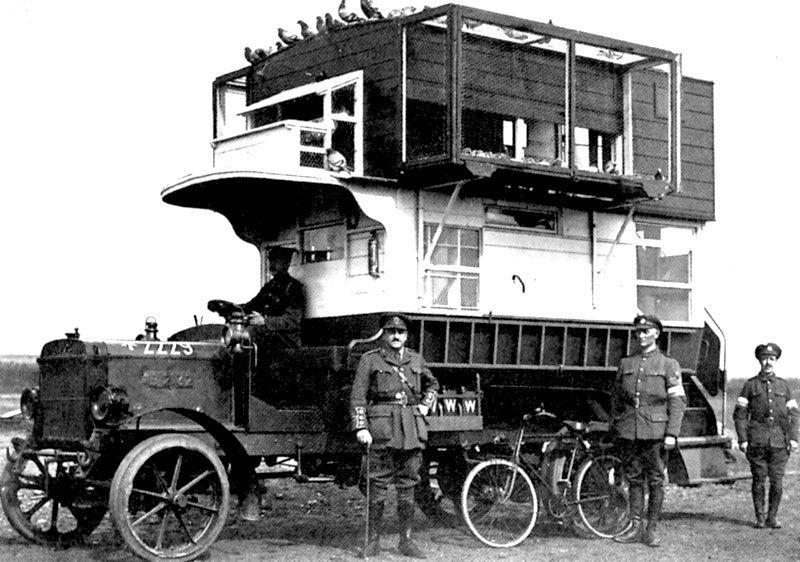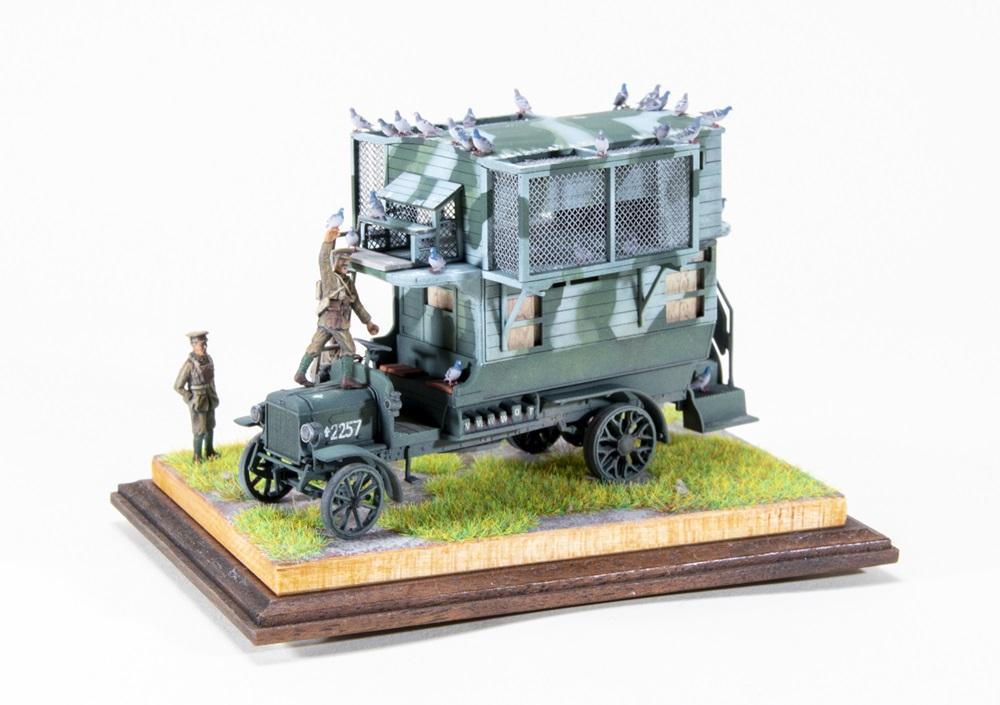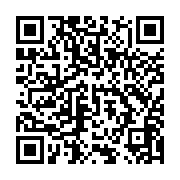World War 1, Model of London B2 Bus in use as Pigeon Loft, 1917
During World War 1, London B2 Type Buses were converted as Pigeon Lofts,on the Western Front to house the many pigeons used for communication purposes.
The first use of carrier pigeons on the battlefield dates back to the 6th Century BC, when Cyrus, the King of Persia, used them to send messages across his empire. In 1914, they were still an effective way of sending messages. Pigeons were the best choice of bird for the job, as they could travel massive distances and still return home. They were also fast, able to travel at up to 60 miles per hour. The telegraph had been invented by 1914, but was heavy and cumbersome, required a mobile power source and had to be linked with a fixed wire connection which was subject to being cut by artillery bombardment. This limited its combat usefulness. As an adjunct to this technology. armies turned to a tool commonly used in much older conflicts the carrier pigeon. In the British Army, London B Type buses were converted as pigeon lofts.
The Pigeon Loft was never intended to be used on the battlefield. Once the conflict started, the vehicles were moved from the streets of London to the Front. They were somewhat crude vehicles, typically on carriages that were pulled by horses. Over the course of the war, however, they were redesigned for combat. In the latter days of the conflict, the Pigeon Loft was attached to the roof of re-outfitted Type B London Buses.
During World War 2 pigeons were still used on battlefields and in bomber aircraft but. Pigeon Lofts were no longer used.
Details
Details
The passenger seats on both levels were removed, the windows on the first floor were shuttered with boards, and the fence on the second floor was replaced by windows, cut out and covered with nets through which birds could fly simultaneously at the required time.
This model is located in the Communications Gallery commissioned by the Australian Army Museum of Western Australia as part of the Centenary commemorations of the Royal Australian Corps of Signals in the broader context of the evolution of communications technologies. Communication devices used by the Australian Army also are presented in their operational context throughout the Museum.
Australian Army Museum of Western Australia
Australian Army Museum of Western Australia
Other items from Australian Army Museum of Western Australia
- World War 2, No 19 Mk2 Wireless
- World War 2, Motorcycle Despatch Rider Model, 1944
- Post 1945, Australian Field telephone, Set K Mk 2, 1962
- Pre 1914, Postmaster-General Wall Phone, 1920s
- World War 1, German Trench Telephone, 1916
- Pre 1914, Field Service Cap, 1900
- World War 1 - Lamp Signaling Daylight (Lucas Lamp)
- Post 1945, Postmaster-General Type 300 Magneto Table Phone, 1940s
- Post 1945, Postmaster-General Telephone - Rotary Dial Model 801, 1960s
- Post 1945, Telstra Touchphone TF200
- Photograph of King's Colour, 16 Battalion (Goldfields Presentation 1920/1926)
- World War 2, Type 2, Japanese Field Telephone
